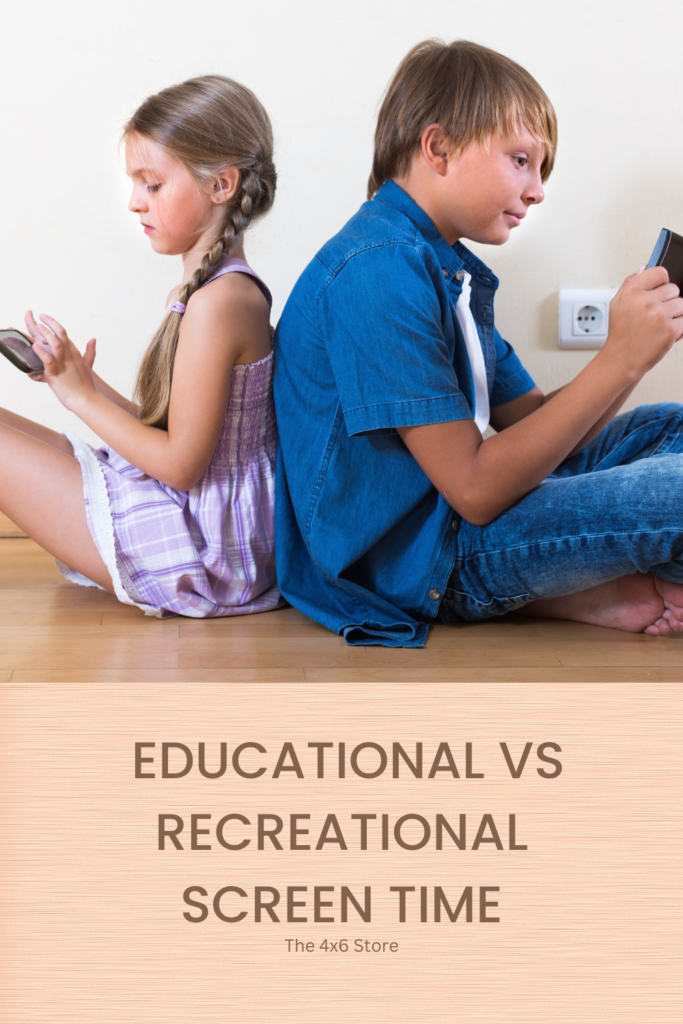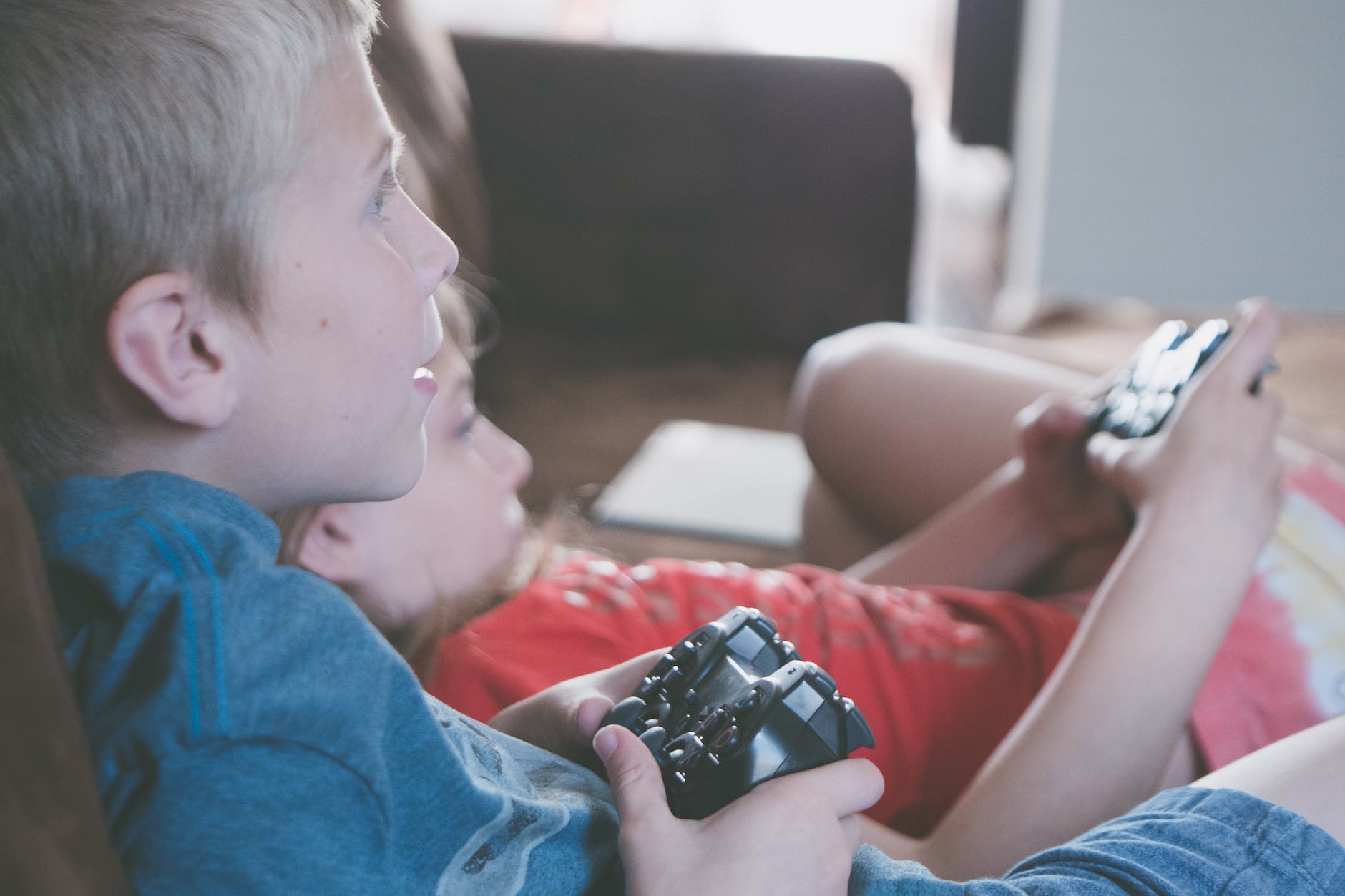Screen Time for Kids: How do We Keep it Balanced?
Amidst all the challenges that parents face in this tech-saturated world, balancing screen time for kids is one of the biggest ones yet.
I recently received a reminder from my kids’ school to limit student screen time. While it was sound advice – and I’m happy to do it! – I was also confused. The school uses hours of screen time each day and assign homework to be completed on digital devices.
So how exactly did the school expect me to balance this?

Obviously, there’s a bit of a disconnect here. My kids were being encouraged to integrate computer technology completely with their learning at school, but we’re being asked to limit their screen time recreationally at home. It made me wonder whether there was a difference in the developmental impacts between academic screen time and recreational screen time.
After some research and years of trying to play the balancing game, I came to the conclusion that as long as my kids’ screen time use is appropriately monitored, there really is no difference in the impacts of using technology for academics versus recreationally. The pros and cons, it seems to me, are the same.
Technology for Kids: The Pros and Cons
The benefits of computer technology are innumerable: the teaching of real-world skills, creative play outlets, plenty of educational content1 – what our kids can get out of using computers is as boundless as the potential of the technology itself.
Personally as a teacher, I love technology too. I assign work through self-checking programs, like my Boom cards, give students instant feedback and individualized instructional work, and efficiently grade and track student progress.
It’s also much easier for me to meet student needs when the digital assignments are adaptable for students who need access to accommodations like speech-to-text, playable audio, captions, and so forth. The opportunities are endless!
There are also unfortunate downsides to this holy-grail of inventions though. Increased screen time is coinciding with decreased sleep and physical activity, both of which are necessary for development and self-care.2
Not to mention that obsession with technology is resulting in less face time with family and friends, addictions to social media and video games, and early exposure to inappropriate content such as drugs, sex, mature language, etc. Cyberbullying in group chats and emails are also incredibly difficult to monitor.
Plenty of studies have shown that limiting screen time and ensuring adequate sleep in children helps to reduce impulsivity3, and supports healthy brain development. However, even the AAP4 has adjusted their screen time recommendations based on the understanding that technology is here to stay – and our kids are going to be using it from a very young age.
So how do we balance the pros and cons so that our children can reap the benefits of our advancing technology while minimizing the risks?

Screen Time for Kids: A Delicate Balance
As a mom of 4 boys, I’m definitely no stranger to the need for balance when it comes to technology use. Zero screen time is not a reality for our family (or my sanity!) While receiving that reminder from their school got me thinking about this even more, I realized my family has already set some rules and expectations around screen time to help offset some of the “cons”.
Here are some strategies that we’ve used to support our kids in balancing their screen time and tech use. They seem to work. Let me know if you’ve tried any of these, and whether they’ve worked for you!
1. Set Daily Limits
We have decided to set password protected timers on our children’s video game devices. During the weekdays, they get 30 minutes per day. On Saturdays, that goes up to 1 hour.
Our family’s TV time is considered on a day-to-day basis. Watching TV is a recreational activity we do together as a family, but is typically limited to 1 hour or 1 movie per day.
2. Set Expectations for When and Where
Expectations for when and where devices can be used will vary between families. For us, school devices – all screens, really – remain in the public areas in the home. Screen usage is not allowed in their bedrooms. This allows me as their parent to monitor my children’s time usage, appropriate content, and appropriate interaction with their peers online. We are not to the age of my boys having their own phones yet. However, we have decided all phones will remain plugged in overnight in a public family area. Children do not need to be surfing the internet or texting friends after bedtime hours. Sleep is so important to their development, and must be a priority! Reducing nighttime distractions is a must!
3. Internet Availability
We’ve also discussed setting internet availability hours for my kids’ devices. You can imagine their interest in staying on their devices decreasing drastically once we cut off the WiFi at 7pm!
What we do is simply use the parental controls on our router to switch off wifi access to certain devices after a certain time. After 7pm, only adult devices has internet access. We did this because we had issues with our oldest sneaking downstairs with his school laptop and being on it until 10pm or later. Cutting the wifi at 7pm helped with that!
4. Digital Citizenship Discussions
Some other issues that we’ve addressed had to do with time-management, social expectations, and cyberbullying.
Once, we noticed one of our sons was saying unkind things via school email. As a parent, this was simply not okay. We had to sit down with him and talk about how writing unkind things is just as hurtful as saying them. The lesson of writing things as you would say them to people was an important one for him. “Hiding” behind a screen does not make any of it better, or even remotely okay.
A Few Finishing Thoughts…
Technology is here to stay. Our job as parents and educators is to set clear boundaries and expectations for our children as we teach them how to navigate the digital world. As they get older and acquire jobs, they will be responsible for setting their own work/recreational screen time balance. School/home technology use is a great training ground for practicing this important life skill!
If you have any other suggestions, or if you have any questions for me, please feel free to leave a comment or reach out on FB or Instagram!
